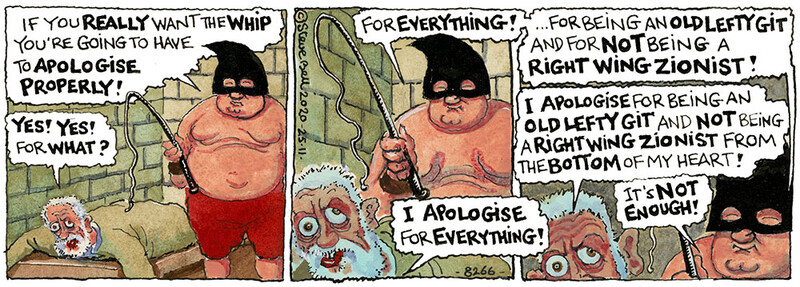Jonathan Cook dissects the investigation by the Equalities and Human Rights Commission into the U.K. Labour Party.
by Jonathan Cook
Part 6 - Outward Appearances
Let us focus instead on the other person named: a minor Labour party figure named Pam Bromley, who was then a local councillor for the borough of Rossendale, near Bolton.
First, we should note that the “harassment” she was deemed to have carried out seems to have been limited to online comments posted to social media. The commission does not suggest she expressed any hatred of Jews, made threats against any Jews individually or collectively, or physically attacked anyone Jewish.
I don’t know anything about Bromley, apart from the handful of comments attributed to her in the report. I also don’t know what was going on inside her head when she wrote those posts. If the commission knows more, it does not care to share that information with us. We can only judge the outward appearance of what she says.
One social media post, it is true, does suggest a simplistic political outlook that may have indicated an openness to anti-Jewish conspiracy theories — or what the commission terms a “trope.” Bromley herself says she was making “general criticisms about capitalism.” Determining anti-Semitic conduct on the basis of that one post — let alone allowing an entire party of 500,000 members to be labelled “institutionally anti-Semitic” for it — might seem more than a little excessive.
But notably the problematic post was made in April 2018 — shortly after Corbyn’s staff wrestled back control of the complaints procedure from those hostile to his project. It was also the same month Bromley was suspended from the party. So if the post was indeed anti-Semitic, Corbyn’s Labour lost no time in dealing with it.
Did Bromley otherwise demonstrate a pattern of posting anti-Semitic material on social media that makes it hard to dispute that she harboured anti-Semitic motives? Were her comments so obviously anti-Semitic that the Labour Party bureaucracy should have sanctioned her much sooner (even if at the time Corbyn’s staff had no control over the disciplinary process to do so)?
Let us examine the two comments highlighted by the commission in the main section of the report, which they deem to constitute the most clear-cut examples of Bromley’s anti-Semitism.

Comments
Post a Comment